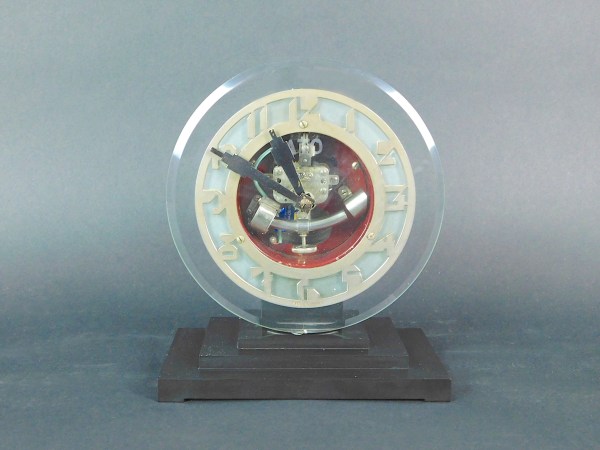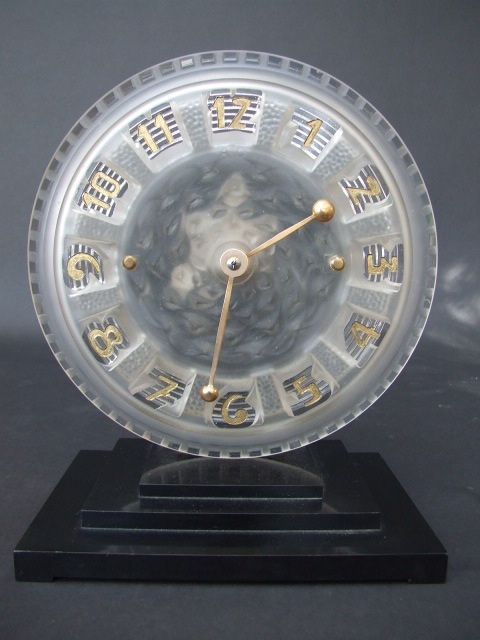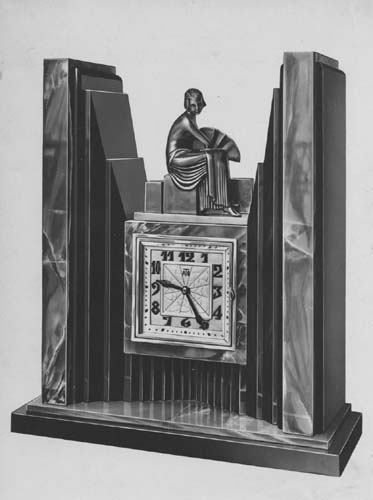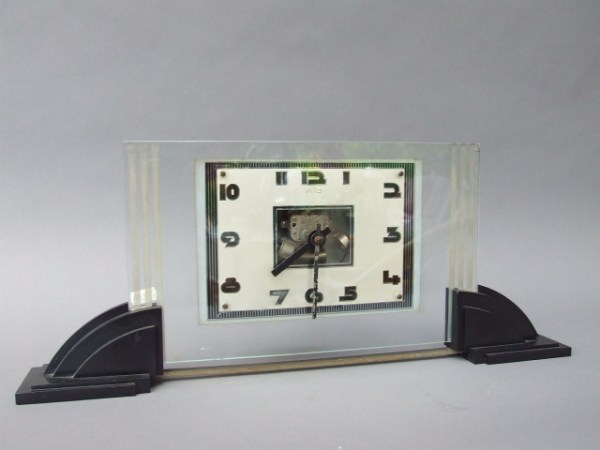ATO Clocks
ATO – Leon Hatot (1883 – 1953). The Master Clock Maker and Sculptor.
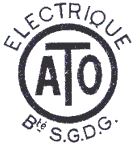
Leon Hatot was a pupil of the Ecole des Beaux Arts and later the Ecole de Horloerie des Besancon. In 1905 he specialised in creating engraving and the creation of jewellery made from precious metals.
After the 1st world war he turned his attention to mainly clocks. It was at this time with the help of Marius Lavet he created the battery operated clock. In 1920 the trademark ATO was born with a patent applied for 1923. Hatot supplied his clock movements to Lalique and in return Lalique supplied ATO with some of the glass cases for the ATO clocks.
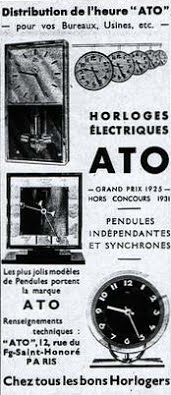
In 1926 he gained a Grand Prize for his sculptures at the Exposition des Arts Decoratifs de Paris and in 1929 the Hatot company created the automatic self winding watch known as the ROLLS – where the watch is wound by the movement of the wrist via balls within two runners.
In 1931 Hatot starts to display his very small new generation of electric clocks. With these clocks he dispenses with ornate decorative cases and uses the faces of the clocks and makes the clock movement itself the whole decorative element. This created a new fashion which revolutionised the new wave of art deco clocks. Ato clocks are based on basic electromagnetic principle – similar to the Bulle clocks – but the solenoid is stationary and the permanent magnet serves as part of the pendulum mass.
Next Blog: Why were so many statues unsigned?
Back to all blogs
